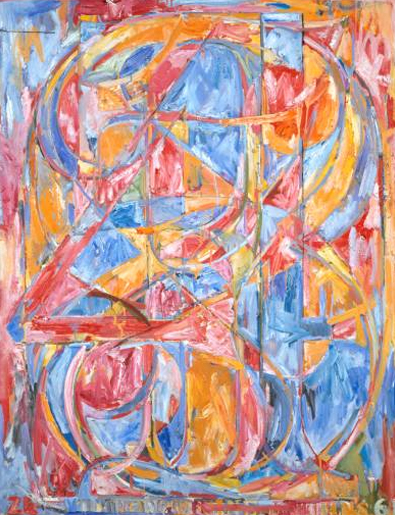YOUNG Jasper Johns, the numbers racketeer of the New York School, was a world away from his predecessors in American painting. Look at Ten Numbers, 1960. This was art that counted: Johns's work crystallised a moment of reaction, a feeling among artists of his generation that something new and different was required. Simplicity was the key. His subjects - the stencilled numbers and letters, the Old Glories and targets and maps that were his chosen vocabulary - were, as Johns said, ''things the mind already knows''. But Johns found ways of making such things complicated. His art was based on minute variations, on nuances, on the sense, so strong in his work, of beetle- browed perplexity. He described his method in 1965: ''Take an object. Do something to it. Do something else to it.'' How, then, to write about Johns? Best keep it simple. Stick to a system. Take an artist. Say something about him. Say something else about him. Make it neat. Five things, therefore, that might be said about Jasper Johns.
Rumoured to be the wealthiest living artist, and a notoriously private man, Johns has been cast as the multi-millionaire recluse of American modernism: the Howard Hughes of art. His elusiveness may have been overplayed. Four interviews with Johns (all billed as ''rare'') have appeared in the British press during the last fortnight. He was pleasant to all his interviewers, but he told them nothing about his art; or at least he in-sisted, courteously but firmly, that he feels there is nothing much useful that he can say about it.
''I don't want my work to be an exposure of my feelings,'' Johns has said. Why then, should people still feel the need to interview him? Maybe they are hoping that the creator of all those taciturn images...


